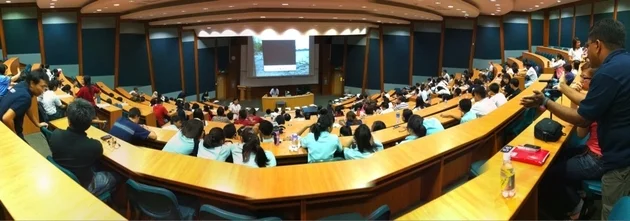Are University Rankings Reliable?
November 11, 2017
EasyUni Staff
Most parents and students are looking at university education as an investment. It is an investment in the student’s future, and like with all good investments, they would like to look at the returns on their investment. This can be measured in monetary terms of salary after graduation, security, like career prospects and job security and also in terms of added value like the likelihood of studying further, knowledge and skills gained, and student satisfaction. While universities have been ranked on these scales at one time or the other, the popular “World University Rankings” systems focus on different aspects of universities. Let's take a look at popular ranking systems and what they really measure.

Times Higher Education
Times Higher Education, a London based educational publication, uses 13 performance indicators grouped into five areas to rank universities. These five areas are teaching (worth 30%), research (the volume, income and reputation, worth another 30%), citations (the institution’s influence on research, also worth 30%), industry income and innovation (2.5%), and international outlook of staff, students and research (7.5%). It is important to note that universities are excluded from the Times Higher Education World University Rankings if they do not teach undergraduates; if they teach only a single narrow subject; or if their research output amounted to fewer than 200 a year.
QS
Founded in the 90s, QS (Quacquarelli Symonds) is a British company specializing in education and international study programs. Some of the performance indicators they use to benchmark universities are research quality, graduate employability, careers service support, teaching quality, infrastructure (such as sports facilities and medical care), student societies and accommodation, IT and libraries, international appeal, innovation and knowledge transfer, and community involvement. These performance indicators should give prospective students a balanced and holistic view of a university’s competitive edge.
At a time when algorithms recommend personalized ads for you and your search history can customize the results of your next search, we can not dismiss the use of available statistics for universities. Rankings do to some extent consider research, faculty, teaching, employability, and international outlook. However, there are still many problems with accepting rankings as the final judgement on universities. Another problem is with over-reliance on surveys for the statistics about university reputation, student satisfaction and employer outlook; these surveys are not always reliable. They can include faculty members that no longer work or teach there. They can often rely heavily on a skewed group of respondents.
Rankings are incredibly subjective, not objective and measurable variables, and therefore not always good indicators for a universal comparison amongst universities. Beyond that, each system is skewed towards one factor or the other. QS has been criticized for giving too much importance to reputational surveys, while, Times Higher Education has been criticized for relying too heavily on citations in their rankings. This makes it harder for universities that don’t use English as their primary language. This is also a problem for many non-western universities that publish books, not papers, which are not as commonly covered by citation records.

Another problem with college rankings is that they tend to perpetuate themselves. Most ranking methodologies also consider reputation and/or previous years rankings. This makes it easier for ‘top’ universities to stay on the list and harder for new universities to rise. Another self-fulfilling affect of rankings is that applications tend to increase as universities rise in rankings. This means a lower admit rate, which then leads to higher rankings. This bolsters the reputation as well, leading to a cycle of the same ‘reputed’ universities staying at the top of the list.
Sure, rankings aren’t completely baseless; they do consider many important factors and while lists like “50 Under 50”, “100 Under 50”, and various regional lists are more common now, the World Rankings are still held as the ultimate canon. So, should students, parents and employers just ignore college rankings? No, but it’s good to keep in mind that they are just one part of the whole picture. Remember to use other measures like looking at the courses offered, talking to current students, visiting campus, looking at other factors like the percentage of students dropping out, class sizes, the availability of financial aid, etc.
Kickstart your education in Malaysia
We'll help you find and apply for your dream university
You might be interested in...
- Why Master's Degree Students are Encouraged to Continue Their PhD?
- What are the Courses and Specialisations in Demand in the Job Market?
- Arab Region's Best: QS University Rankings 2016 for the Middle East
- Brazil Tops QS University Rankings for Latin America
- Updated: Malaysian universities continue to make progress in THE World University Rankings 2023
- Careers That Would Be Sought After In The Future In Malaysia: Job Demand Guide
- Russia holds all top three spots in new QS University Rankings for EECA
- How to Survive in the University of Malaya: A quick guide on making it out alive
- Six Critical Factors when Choosing a University
- KAIST leads in Asia; Stanford, the world as The Most Innovative University





 +60173309581
+60173309581